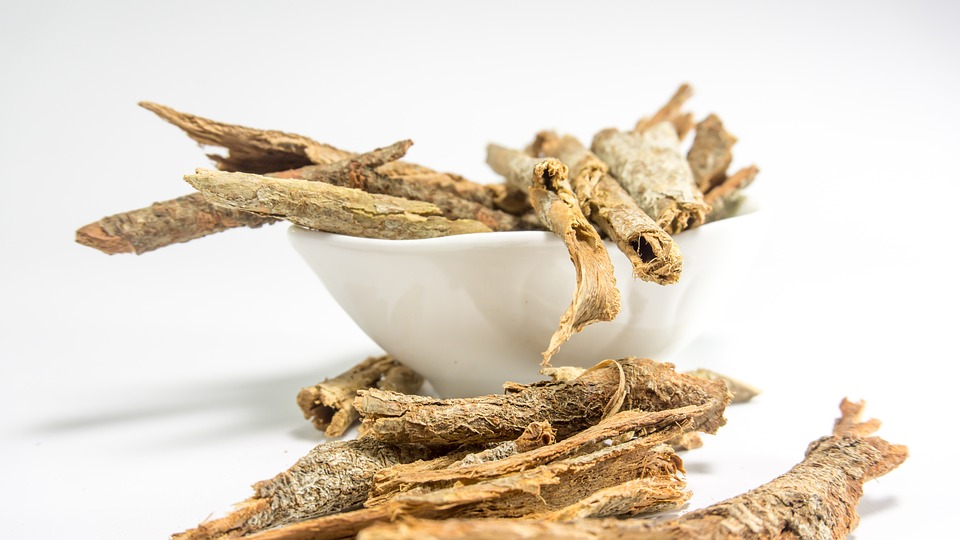Most of us are aware that a healthy diet includes eating several servings of vegetables each day. Vegetables are important sources of vitamins, minerals, soluble and insoluble fiber, and bioflavonoids. (See Eating Alive II, pages 458 and 459, for an explanation of the importance of bioflavonoids.) Be sure to eat a variety of veggies that are all the colours of the rainbow; this will provide a wide range of antioxidant activity from the different bioflavonoids. Choose organic as often as possible, to reduce the amount of chemicals that your liver has to deal with.
In the summer, when we get out in the sunshine more, it’s easier to make sure we’re consuming our daily quota of vegetables because we can eat more salads and raw veggies. Now that the weather is turning cooler for many of us, it’s important that we limit the amount of salads that we eat—so as not to confuse the kidneys about the climate and subsequently weaken the ileocecal valve (see Dr. Matsen’s Comments for the Month, September, 2002).
All vegetables are high in potassium and therefore have a cooling effect on the body. This can be somewhat offset by cooking and salting them. The cooking process helps to break down the tough fibers of the vegetables and improves the absorption of bioflavonoids. Here are some tips to help you increase the amount of vegetables in your diet:
- Add veggies to stews, casseroles, and soups. If you have children who aren’t crazy about veggies, this is a great way to sneak some in. Just chop up the veggies into small pieces, or make soups that you can purée (for example: Creamy Broccoli Soup, Tomato Soup, and Creamy Vegetable Soup in Eating Alive II).
- Veggies can also be added to spaghetti sauce, pizza, chili, and lasagna (for recipes, see this month’s recipe, Spaghetti Sauce; also see Vegetable Pizza, Spinach and Feta Cheese Pizza, Turkey Chili, and Tofu and Veggie Lasagna in Eating Alive II). The cooked tomatoes in these dishes are high in lycopene, an important bioflavonoid.
- Try roasting veggies, either on their own (see Roast Vegetables in Eating Alive II) or with a whole chicken, to bring out their natural sweet flavour. Veggies that are great for roasting include onions, garlic, carrots, potatoes, sweet potatoes, turnips and rutabagas, sweet red peppers, beets, eggplant, tomatoes, and zucchini.
- Start as early as breakfast time to get some of your daily dose of veggies—add onions, sweet peppers, zucchini, spinach, broccoli, and/or tomatoes to your omelettes or scrambled eggs. Or serve poached eggs over steamed spinach and sliced tomatoes. Don’t limit these egg dishes to just breakfast; they can be eaten for lunch and dinner, as well.
- Curries are another flavourful option. See Eating Alive II recipes for Curry (in the Asian Recipe section) and Cauliflower Curry.
- Stir-fries are a great way to add a variety of different veggies to your diet. Use your own favorite recipe or check out Eating Alive II for additional stir-fries.
- Pile lots of lettuce and tomato slices into your sandwiches.
- Steaming is a fast and easy way to cook many types of veggies. Use a folding steaming rack or bamboo steamer over boiling water to cook your veggies until they’re tender-crisp. You can add more flavour by putting herbs, ginger, onion and/or garlic in the steaming water. Instead of butter or margarine, simply season steamed veggies with sea salt, minced fresh herbs and/or a squeeze of fresh lemon juice. Or try the following healthy, easy-to-make dressing; it’s great drizzled over hot or cold steamed veggies such as broccoli, cauliflower, carrots, and snow peas. Combine two-parts Udo’s Choice Ultimate Oil Blend®, one-part apple cider vinegar (choose the raw, unfiltered, organic type found in health food stores) and minced garlic (to taste).
- Another kid-friendly (and adult-friendly!) option is a plateful of veggies (raw and cooked) served with dip. Many children will eat veggies if they’re served with a dip and many will eat broccoli if it’s lightly steamed, rather than raw. Other veggies to include are: steamed snow peas; strips of jicama; cucumber slices; carrot sticks (raw or steamed until tender-crisp); red pepper slices; and tomato wedges or grape or cherry tomatoes. For dip recipes, see Eating Alive II (for example: Tatziki, Yogurt Herb Dip, Tofu Herb Dip, Hummus).
- Increase the variety of veggies that you eat by introducing a different, unfamiliar veggie into your diet every week or so. Try daikon radish, eggplant, fennel, sea vegetables, jicama, kohlrabi, spaghetti squash (see this month’s recipe, Spaghetti Sauce) and the wide variety of leafy greens (see below).
- Don’t forget to include lots of leafy greens to get vitamin K! Just because you need to limit the amount of salads you eat doesn’t mean you can’t eat your leafy greens—they can be added to soups, stews, casseroles, stir-fries, egg dishes, etc. Try kale, spinach, beet greens, watercress, collard greens, bok choy, swiss chard, mustard greens, and broccoli rabe (also called rapini). See also the recipe for Sautéed Greens in Eating Alive II.
It’s okay to have salads occasionally, if you don’t have a weakened ileocecal valve; just remember to add unprocessed sea salt. Choose salads like Taco Salad (see Recipe section) in which the lettuce is combined with ‘warming foods,’ such as cooked ground turkey or chicken. Remember to use dark green lettuces such as romaine (instead of iceberg) because they are higher in nutrients.



